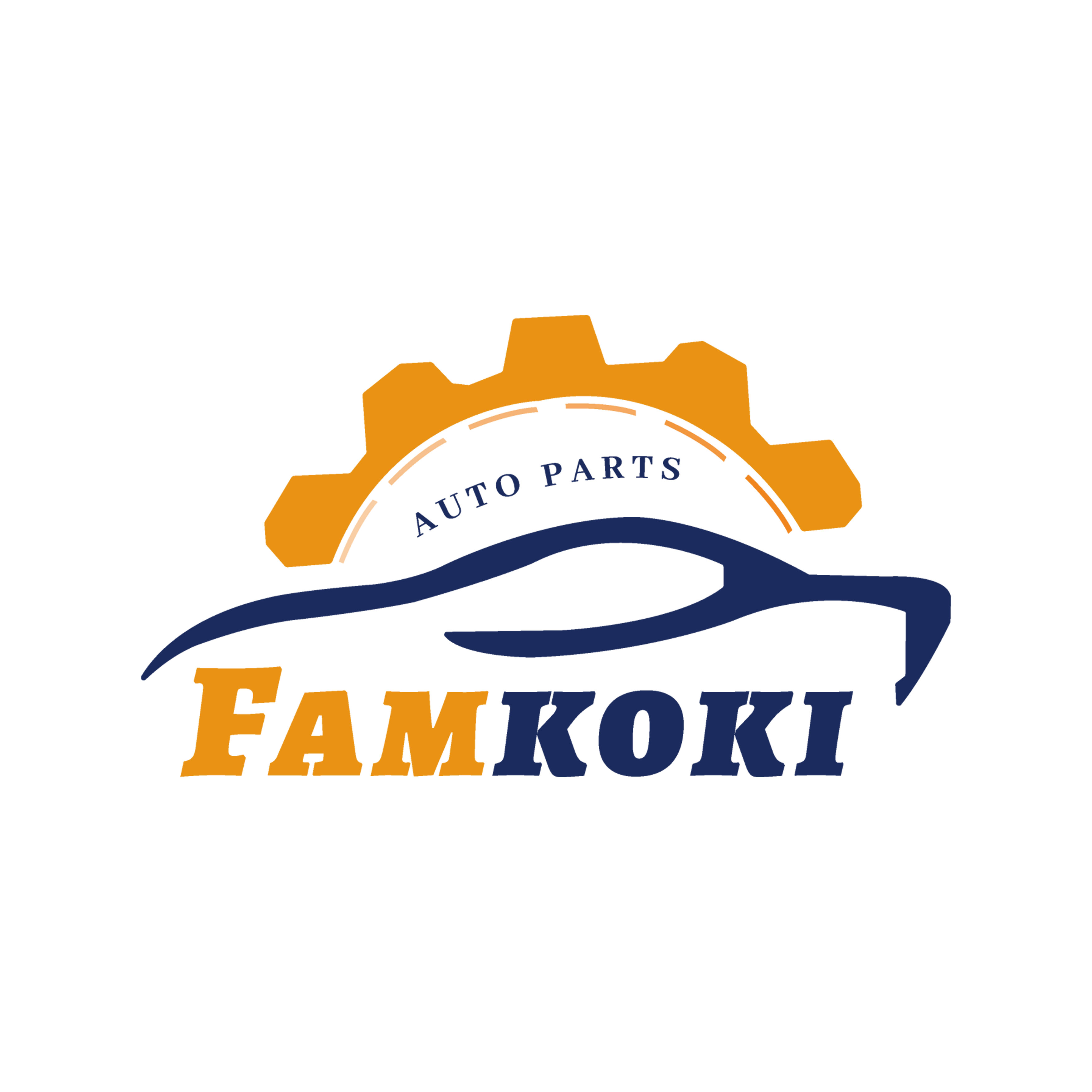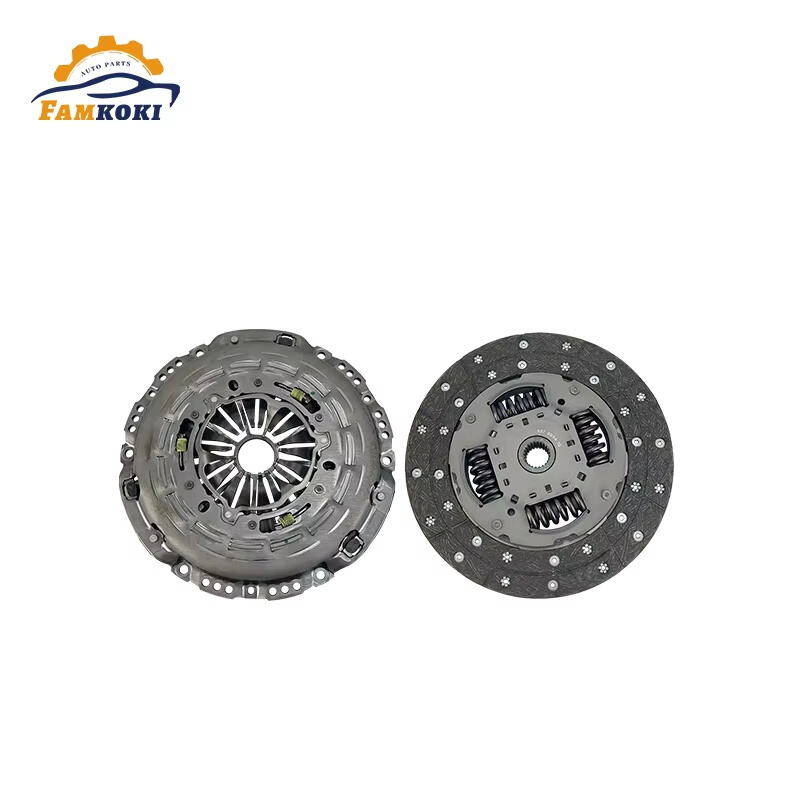Why Clutch Pressure Plate Durability Matters for Your Vehicle
Impact on Transmission Performance & Longevity
Durable clutch pressure plates are crucial for enhancing the performance and longevity of a vehicle's transmission. When constructed to withstand wear, they ensure consistent engagement and disengagement, which are vital for maintaining the smooth operation of gears. This leads to a better driving experience and reduces wear on other transmission components. These plates support both manual and automatic systems by facilitating smoother shifting, thus improving the overall driving dynamics. Furthermore, a clutch pressure plate with an extended lifespan minimizes replacement frequencies, saving on transmission repair costs and labor expenses, contributing to overall vehicle reliability.
Cost-Efficiency Through Reduced Replacement Needs
Investing in high-quality clutch pressure plates translates into cost efficiency by reducing the frequency of replacements. Durable pressure plates can extend the intervals between replacements by up to 50%, as indicated by various statistics. This not only aids in better financial management for vehicle owners but also supports fleet operators looking to economize fleet maintenance. Moreover, the reliability of superior components often comes with warranties, offering assurance of their extended service life and reinforcing their value for money. Thus, such investment can save significant costs over the lifetime of the vehicle in both parts and labor.
Enhancing Driving Experience with Reliable Engagement
A reliable clutch pressure plate is essential for a smooth and enhanced driving experience. It ensures seamless gear transitions, which are particularly crucial in performance or sports cars, where driving dynamics and control are paramount. Consistent engagement leads to improved driver feedback and better control of the vehicle, significantly boosting safety. Additionally, by reducing the risk of clutch slippage, especially under demanding performance conditions, the pressure plate plays a crucial role in maintaining the vehicle's operational integrity. Therefore, the reliability and effectiveness of the clutch pressure plate are vital for drivers seeking a refined and secure driving experience.
Clutch Pressure Plates 101: Function & Critical Components
How Pressure Plates Transfer Engine Power to the Transmission
The clutch pressure plate is critical in transferring engine power to the transmission, effectively facilitating vehicle movement. By clamping the clutch disc against the flywheel, the pressure plate ensures that engine torque is effectively transferred to the transmission, powering the vehicle’s drivetrain. A well-designed pressure plate optimizes this power transfer, enhancing engine performance and fuel economy. Selecting the appropriate pressure plate involves understanding how it functions relative to vehicle specifications and power requirements like torque and RPM.
Interaction with Clutch Discs and Flywheels
Clutch pressure plates work in harmony with clutch discs and flywheels to create a seamless system geared toward efficient engagement and disengagement. Together, these components ensure smooth gear transitions, greatly affecting overall vehicle performance. The alignment and compatibility of the pressure plate with the clutch disc and flywheel are crucial for optimal operation. Wear and tear on any of these components can lead to decreased performance, necessitating comprehensive repairs to restore efficiency and maintain the vehicle’s drivability.
The Role of Spring Mechanisms in Engagement
Spring mechanisms within clutch pressure plates are pivotal in modulating the force necessary for the clutch to engage and disengage. These mechanisms, including diaphragm and coil springs, influence the clutch’s performance characteristics, impacting pedal feel and the speed of engagement. Understanding the specifics of spring mechanics aids in selecting the right clutch pressure plate tailored to vehicle needs, ensuring optimal performance and driving comfort. Selecting a spring mechanism that matches your vehicle’s requirements can significantly enhance driving ease and system responsiveness.
Types of Durable Clutch Pressure Plates: Materials & Designs
Diaphragm vs. Spring-Type: Pros and Cons
When selecting a clutch pressure plate, the choice between diaphragm and spring-type designs is crucial. Diaphragm pressure plates are favored for their lightweight construction and efficient engagement. However, they might not perform optimally in extreme performance settings, making them more suitable for standard applications. On the other hand, spring-type pressure plates are designed to handle high-torque applications more effectively due to their robust construction. This often results in additional system weight and complexity. Choosing between these two types hinges on the specific application and performance requirements of your vehicle, ensuring optimal clutch operation and system efficiency.
Organic, Ceramic, and Kevlar-Reinforced Variants
The material of a clutch pressure plate greatly impacts its performance and suitability for specific applications. Organic materials are ideal for everyday drivers as they provide smooth engagement and are cost-effective to manufacture. For those seeking high performance, ceramic variants offer superior heat resistance, making them perfect for high-speed and race vehicles despite their high friction, which can affect engagement smoothness. Kevlar-reinforced plates offer exceptional durability, lasting 2-3 times longer than organic options, and ensure smooth engagement, though they require a longer break-in period. Each material has unique advantages, influencing the driving characteristics, long-term durability, and operational costs.
Heavy-Duty vs. Standard: Matching Use Case to Design
Selecting the appropriate clutch pressure plate design involves balancing the vehicle's use case with the specific attributes of heavy-duty and standard options. Heavy-duty plates are engineered to handle increased load and stress, making them suitable for applications involving towing or racing, where resilience against harsh conditions is paramount. Conversely, standard plates are tailored for routine driving, balancing comfort with performance. Understanding the requirements of your vehicle ensures you choose a pressure plate that prolongs component life, maintains optimal performance, and aligns with your driving needs, whether under intense or regular conditions.
Key Features for Long-Lasting Clutch Pressure Plates
Heat-Resistant Materials for High-Friction Applications
High-performance applications demand pressure plates constructed from heat-resistant materials to ensure durability and functionality. These materials are essential for withstanding the significant heat generated during operation, which prevents warping or failure. Research indicates that the use of such materials can extend the lifespan of clutch components by up to 30%, thereby offering noticeable performance benefits. Effective heat management ensures that the vehicle maintains optimal performance even under stressful conditions, safeguarding it against premature wear.
Precision Engineering for Consistent Clamp Load
Precision manufacturing processes are critical for maintaining a consistent clamp load in clutch pressure plates. This consistency is vital for ensuring reliable engagement and overall performance. A snug and uniform fit of the pressure plate is crucial; any misalignment can lead to uneven wear and potential performance issues. By investing in precision-engineered components, vehicle owners can significantly reduce maintenance costs and avoid premature failures, ensuring a more reliable and long-lasting clutch system.
Corrosion Protection in Harsh Operating Environments
To withstand harsh operating environments, clutch pressure plates require corrosion resistance features. This protection is particularly important for vehicles exposed to challenging conditions, where it helps ensure both longevity and performance of the clutch system. By utilizing coatings or materials that resist rust and corrosion, the service life of the pressure plate is extended, even in regions subject to drastic environmental changes. Durability against corrosion results in fewer required maintenance intervals and part replacements, offering cost efficiency to users.
Top-Rated Clutch Pressure Plates for Maximum Durability
SPEC Clutch: Dual-Disc Racing Solutions
SPEC Clutch is renowned for its high-performance dual-disc setups that significantly enhance torque capacity and engagement, making them ideal for racing applications. Their products are thoroughly tested and highly rated for reliability and performance under extreme conditions. Racers frequently choose SPEC Clutch components, appreciating their proven ability to endure high-stress environments while delivering superior racing performance. Incorporating dual-disc technology into their design, these clutches can withstand the rigors of competitive racing and heavy-duty use, ensuring consistent performance.
McLeod RXT Series: Balanced Performance for Street & Track
The McLeod RXT series seamlessly combines street-friendly drivability with robust performance capabilities, perfect for diverse driving scenarios. Known for its engineering excellence, the RXT series ensures sustained performance while maintaining clutch engagement comfort, crucial for everyday use. Many drivers appreciate the versatility of the RXT series, which provides the best of both worlds—exceptional durability and ease of use. This clutch series is often highlighted for balancing high power-holding capabilities with streetable characteristics, offering reliability both on the road and on the track.
Centerforce II: Off-Road and Heavy-Duty Reliability
Centerforce II is specifically designed for off-road and heavy-duty applications, offering the necessary durability for aggressive driving conditions. Notably, it features a patented centrifugal weighting system, which enhances grip and performance in rugged terrains. These options are highly favored by off-road enthusiasts for their history of reliability and robustness. The clutch's design caters to the demands of challenging environments, ensuring it can withstand the toughest conditions while maintaining effective engagement and longevity.
Frequently Asked Questions (FAQ)
Why is clutch pressure plate durability important for my vehicle?
Durability is crucial because it enhances the performance and longevity of the vehicle’s transmission, reducing the frequency of replacements and maintenance costs.
What are the main types of clutch pressure plates?
The main types include diaphragm and spring-type pressure plates, each with distinct advantages depending on the vehicle's application and performance requirements.
How do materials affect clutch pressure plate performance?
Materials such as organic, ceramic, and Kevlar impact performance by offering different levels of durability, heat resistance, and engagement smoothness.
What features should I look for in a durable clutch pressure plate?
Key features include heat-resistant materials, precision engineering for consistent clamp load, and corrosion protection for longevity in harsh environments.
Table of Contents
- Why Clutch Pressure Plate Durability Matters for Your Vehicle
- Clutch Pressure Plates 101: Function & Critical Components
- Types of Durable Clutch Pressure Plates: Materials & Designs
- Key Features for Long-Lasting Clutch Pressure Plates
- Top-Rated Clutch Pressure Plates for Maximum Durability
- Frequently Asked Questions (FAQ)
 EN
EN
 AR
AR
 FR
FR
 KO
KO
 PT
PT
 RU
RU
 ES
ES


